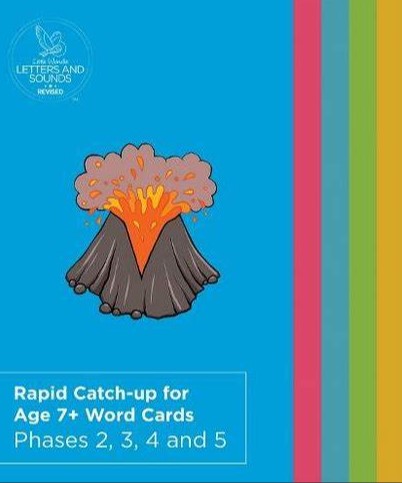Phonics
Intent
Phonics (reading and spelling)
We want to teach every child to read!
We use all of Little Wandle’s programmes such as the rapid catch-up (for those children who are in Year 2 or above who cannot read at age-related expectations and needs urgent targeted support) the Foundation programme (for Nursery and Reception) and their SEND programme (for those children with SEND needs who may need a graduated approach.)
Foundations for phonics contributes to the provision for ‘Communication and language’ and ‘Literacy’ (DfE, 2022); it sits alongside a stimulating language-rich provision. Foundations for phonics sets out the provision that should be in place to ensure children are well-prepared to begin grapheme–phoneme correspondence and blending at the start of Reception. The provision includes a balance of child-led and adult-led experiences. One of the most important aspects of Foundations for phonics is a developing awareness of sound, through activities that develop focused listening and attention, including oral blending.
The programme is broken down into three areas: Foundations for a Love of Reading within our English lessons, Foundations for Phonics, and Foundations for Language. For each area, we provide our staff with all the guidance, planning and resources they will need.
As a result, all our children are able to tackle any unfamiliar words as they read. At St Thomas, we also model the application of the alphabetic code through phonics in shared reading and writing, both inside and outside the phonics lesson and across the curriculum. We have a strong focus on language development for our children because we know that speaking and listening are crucial skills for reading and writing in all subjects.
Comprehension
At St Thomas, we value reading as a crucial life skill. By the time children leave us, they read confidently for meaning and regularly enjoy reading for pleasure. Our readers are equipped with the tools to tackle unfamiliar vocabulary. We encourage our children to see themselves as readers for both pleasure and purpose.
Because we believe teaching every child to read is so important, we have a Reading Leader and Phonics Leader who drive the early reading programme in our school. Working together, they are highly skilled at teaching phonics and reading, and they monitor and support our reading team, so everyone teaches with fidelity to the Little Wandle Letters and Sounds Revised programme.
Implementation
Foundations for phonics in Nursery
- We provide a balance of child-led and adult-led experiences for all children that meet the curriculum expectations for ‘Communication and language’ and ‘Literacy’. These include:
- sharing high-quality stories and poems
- learning a range of nursery rhymes and action rhymes
- activities that develop focused listening and attention, including oral blending
- attention to high-quality language.
- We ensure Nursery children are well-prepared to begin learning grapheme-phoneme correspondences (GPCs) and blending in Reception.

Daily phonics lessons in Reception and Year 1
- We teach phonics for 30 minutes a day. In Reception, we build from 10-minute lessons, with additional daily oral blending games, to the full-length lesson as quickly as possible. Each Friday, we review the week’s teaching to help children become fluent readers.
- Children make a strong start in Reception: teaching begins in Week 2 of the Autumn term.
- We follow the Little Wandle Letters and Sounds Revised expectations of progress:
- Children in Reception are taught to read and spell words using Phase 2 and 3 GPCs, and words with adjacent consonants (Phase 4) with fluency and accuracy.
- Children in Year 1 review Phase 3 and 4 and are taught to read and spell words using Phase 5 GPCs with fluency and accuracy.
You can watch how we teach our children the correct sounds (for your own use at home) using the below link:
For parents | Letters and Sounds (littlewandlelettersandsounds.org.uk)

Impact
Assessment
Assessment is used to monitor progress and to identify any child needing additional support as soon as they need it.
- Assessment for learning is used:
- daily within class to identify children needing Keep-up support
- weekly in the Review lesson to assess gaps, address these immediately and secure fluency of GPCs, words and spellings.
- Summative assessment is used:
- every six weeks to assess progress, to identify gaps in learning that need to be addressed, to identify any children needing additional support and to plan the Keep-up support that they need.
- by SLT and scrutinised through the Little Wandle Letters and Sounds Revised assessment tracker, to narrow attainment gaps between different groups of children and so that any additional support for teachers can be put into place.
Statutory assessment
- Children in Year 1 sit the Phonics Screening Check. Any child not passing the check re-sits it in Year 2.
Rapid Catch-up
- Children who do not pass their phonics screening test in year 1 and or are not at age related in year 2 for reading, are placed in a rapid catch-up Little Wandle intervention group. These are completed daily in small groups of 2-4 children from year 2-6. They follow the same 3-part model lessons and are tracked by the rapid catch-up assessment tool. Every 5 weeks, children are reassessed to monitor their reading level and gaps within knowledge.



